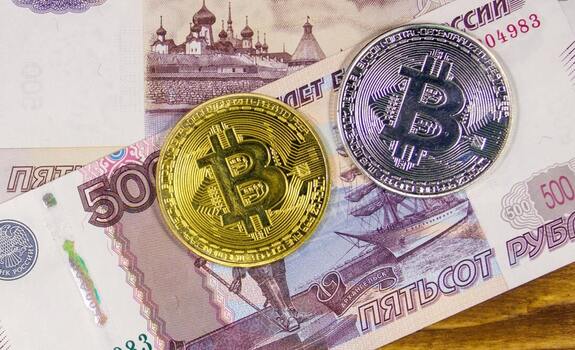Where to Invest 100,000 Rubles: 7 Proven Strategies for a Global Audience
For many investors, the amount of 100,000 rubles (approximately 1,200 USD at current exchange rates) may seem like a modest starting point. However, with a systematic and thoughtful approach, it can serve as a foundation for a diversified portfolio, a source of steady growth, and simultaneously as a catalyst for enhancing financial literacy. This article presents seven strategies that span the spectrum from conservative deposits to aggressive speculation, taking into account tax nuances and investment timelines under the conditions of the global market in 2025. Regardless of experience level, risk profile, or geography, there is an option here for every investor to enhance their capital.
1. Conservative Strategies: Security and Liquidity
1.1 Bank Deposits
Intent: Direct (bank deposits of 100,000 rubles)
Bank deposits remain the most straightforward and reliable way to preserve capital. Insurance from the Deposit Insurance Agency (DIA) covers deposits up to 1.4 million RUB, effectively eliminating the risk of loss. In 2025, the yield on ruble deposits at leading banks reaches 10–12% per annum, with the possibility of capitalising interest. For instance, a six-month deposit at 11% would yield approximately 5,500 RUB in net income, which, upon extension, automatically increases the base for interest calculation.
When selecting a deposit, pay attention to:
- Maturity period: on demand (at the minimum rate), short-term (1–6 months), or long-term (over a year).
- Conditions for replenishment and partial withdrawal without losing interest.
- Minimum deposit: ranges from 5,000 to 100,000 RUB across different banks.
- Additional options: capitalisation, interest payouts to a separate account, currency of the deposit.
1.2 Government Bonds (OFZ)
Intent: Direct (OFZ yield 2025)
Federal loan bonds (OFZ) remain a reference point for conservative investors. A coupon of 8–11% annually and governmental guarantees minimise the risk of default. There are three key formats:
- Fixed coupon — predictable income without additional risks.
- Floating coupon (OFZ-PD) — the rate is linked to the Central Bank's key rate, providing protection against inflation.
- Indexed — nominal value is also adjusted for inflation levels.
Purchase is done through a brokerage account, where the commission ranges from 0.01% to 0.05% per transaction. For beginners, an investment of 10,000 RUB is sufficient, after which coupons can be reinvested quarterly to gradually increase holdings.
1.3 Money Market Funds
Intent: Direct (money market fund yield)
Shares in Money Market Funds (MMFs) are allocated among short-term deposits, commercial papers, and OFZs, providing a yield in the range of 9–11%. The main advantages include:
- Redemption of shares within one working day without loss of income.
- Minimal entry thresholds starting from 1,000 RUB.
- Low management company fees — around 0.2–0.5% annually.
- Convenience for "parking" funds while waiting for favourable entry points into other market segments.
For instance, investing 50,000 RUB in an MMF allows you to safely hold capital until better moments for reinvestment into more profitable assets arise.
2. Balanced Strategies: Moderate Risk-Return Ratio
2.1 Portfolio Diversification
Intent: Comparative (portfolio diversification of 100,000 rubles)
Proper diversification allows for smooth capital growth with controlled risk. Consider a model portfolio of 100,000 RUB:
| Asset Class | Share | Expected Yield |
|---|---|---|
| OFZ + deposits | 40% | 9–12% |
| Corporate bonds | 30% | 10–14% |
| Dividend stocks | 20% | 5–8% + growth |
| Money market funds | 10% | 9–11% |
This composition reduces volatility and maintains liquidity, allowing the investor to react flexibly to market changes.
2.2 Corporate Bonds
Intent: Direct (buy corporate bonds)
Bonds from issuers with a credit rating of “A” to “AA” are an optimal choice for moderate investors. The average coupon is 10–14% annually, yet it is essential to consider:
- The financial stability of the company (debt coverage ratios).
- The term of the securities — from 1 to 5 years.
- Periodic assessments by rating agencies.
Rebalancing occurs once a year: a portion of the coupon income can be transferred to other assets to enhance diversification.
2.3 Dividend Stocks
Intent: Direct (dividend stocks Russia)
For forming a stable passive income, stocks of the largest Russian companies such as Gazprom, Sberbank, and Lukoil are suitable. The average dividend yield in 2025 is projected to be 5–8%. The investor can:
- Receive dividends quarterly or semi-annually.
- Reinvest payouts or utilise them for current expenses.
- Increase ownership in a company during price corrections.
The key recommendation is not to invest more than 5% of the portfolio capital in one company.
3. Alternative Assets: Protection Against Inflation and Uncertainty
3.1 Precious Metals
Intent: Comparative (gold vs silver)
Gold traditionally serves as a hedge against crises. Available instruments include:
- Unallocated metal accounts (UMS) — flexibility and a yield of around 6–7%;
- Gold ETFs — traded like stocks, eliminating holding costs;
- Physical bullion and coins — high liquidity, but require expenses for storage and insurance.
Silver and platinum appeal to more aggressive investors: higher price volatility creates opportunities for speculation and supernormal returns.
3.2 Real Estate (REITs and Crowdinvesting)
Intent: Direct (REITs real estate funds)
100,000 RUB is insufficient for purchasing an apartment, but you can:
- Acquire shares in REITs — average dividend yield of 7–9%;
- Invest in foreign real estate funds through an Individual Investment Account (IIA) or brokerage account;
- Participate in crowd-investing projects for development with a minimum threshold from 50,000 RUB and returns of 10–15%.
An analysis of the legal structure of the fund and the terms of profit distribution is essential.
3.3 Investments in Small Businesses
Intent: Direct (investments in small business)
Crowdfunding allows for investments starting from 10,000 RUB in promising startups. The expected return is between 12–20% annually, but the high risk of non-repayment necessitates limiting this segment to no more than 5% of the portfolio. Project selection criteria include:
- The team's experience and presence of a Minimum Viable Product (MVP);
- A realistic business plan;
- Legal documentation of equity and debt obligations.
4. High-Risk Instruments: Growth Potential and Volatility
4.1 Growth Stocks
Intent: Implicit (growth stocks Russian companies prospects)
Investing in scalable companies in IT, biotech, or rare resource extraction allows for a stock price growth forecast of 20–50% annually. However, declines of 30–50% are possible with negative news. Limit investments to no more than 10% of the portfolio and plan for an investment horizon of 3 to 5 years.
4.2 Cryptocurrencies
Intent: Direct (cryptocurrency risks 2025)
Bitcoin and Ethereum remain the primary assets in the crypto market. With the right entry point, returns can exceed 50–100% annually, but consider the following:
- High volatility: price fluctuations can reach up to 20% per day;
- Taxes at 13% on profits in Russia;
- Regulation and risks of account freezes on cryptocurrency exchanges.
The optimal share of cryptocurrencies should be up to 5% of the portfolio with a mandatory stop-loss.
4.3 Derivatives and Speculative Strategies
Intent: Implicit (derivatives futures options risks)
Futures, options, and trading with leverage are suitable only for experienced traders. Pros include:
- The potential for multiplying profits;
- A wide range of instruments (commodity, currency, equity futures).
Downsides include high commissions, margin requirements, and the risk of total loss of collateral on incorrect predictions.
5. Tax Optimization: Individual Investment Accounts
5.1 Types of IIAs
Intent: Direct (open an IIA)
IIAs offer two main tax deductions:
- Type A — 13% of contributions (up to 52,000 RUB per year);
- Type B — exemption from personal income tax on earnings from the account after three years.
The IIA-3 combines both deductions but requires adherence to complex conditions for contributions and fund retention.
5.2 IIA vs Brokerage Account
Intent: Comparative (IIA vs brokerage account)
A regular brokerage account is not limited by duration and does not provide tax benefits but allows for easy fund withdrawal. The IIA is advantageous for long-term investments of at least three years with regular account contributions.
6. Timelines and Financial Planning
6.1 Short-Term Strategies (up to 1 year)
Intent: Direct (short-term investments up to 1 year)
For a short-term horizon, ideal options include:
- On-demand deposits;
- Money Market Funds;
- OFZs maturing within the next year.
Suitable for "emergency fund" purposes and liquidity.
6.2 Medium-Term Strategies (1–5 years)
Intent: Direct (medium-term investments 1–5 years)
A combination of corporate bonds, dividend stocks, and REITs demonstrates yields of 9–15% annually with moderate risk. It is advisable to rebalance every six months to maintain the target portfolio structure.
6.3 Long-Term Strategies (5+ years)
Intent: Direct (long-term investments 5+ years)
For pension savings and major purchases, optimally suited options include:
- Growth stocks;
- Cryptocurrencies;
- Long-term IIA portfolios;
- Real estate through REITs.
The effect of compound interest and reinvesting coupons/dividends significantly increases overall profitability.
7. Practical Steps to Get Started
7.1 Choosing a Broker and Platform
Intent: Direct (choosing a broker fees)
Compare:
- Transaction and account maintenance fees;
- The interface of mobile and web platforms;
- Access to foreign markets (ETFs, REITs, bonds);
- Availability of IIAs and bonuses for new clients.
7.2 Forming the First Portfolio
Intent: Implicit (model portfolio 100,000 rubles)
Determine your risk profile (conservative, balanced, or aggressive) and allocate capital according to recommended shares. Start with 2–3 instruments, monitoring dynamics, and gradually adding new asset classes.
7.3 Risk Management and Discipline
Intent: Implicit (risk management)
Establish personal rules:
- Stop-loss at 5–10% for risky assets;
- Periodic portfolio review no more than once a month;
- Maintain an investment journal detailing decisions and outcomes;
- Educate yourself on financial psychology and practice the cool-headed adherence to strategy.
By following these recommendations and thoroughly analysing the instruments, an investor can effectively manage a capital of 100,000 RUB, gradually increasing yields while minimising risks, regardless of the global economic situation.




